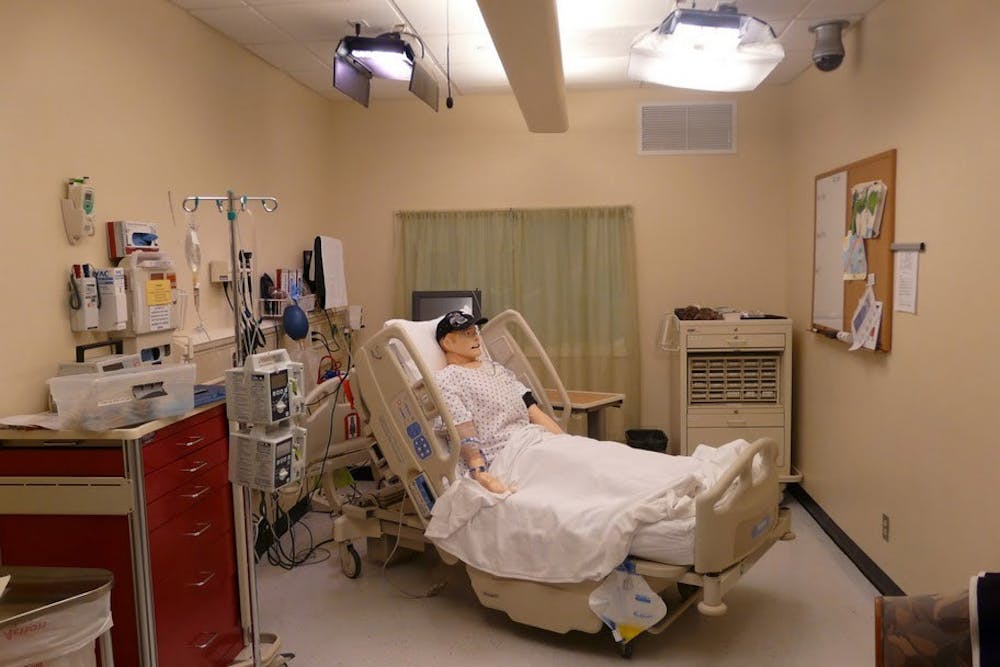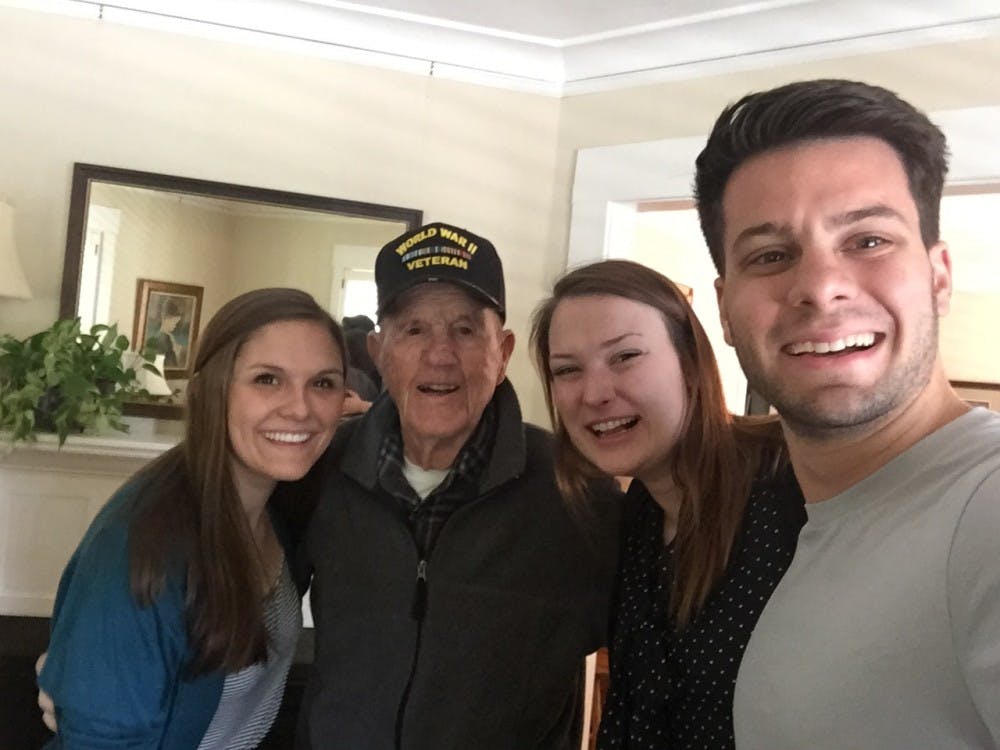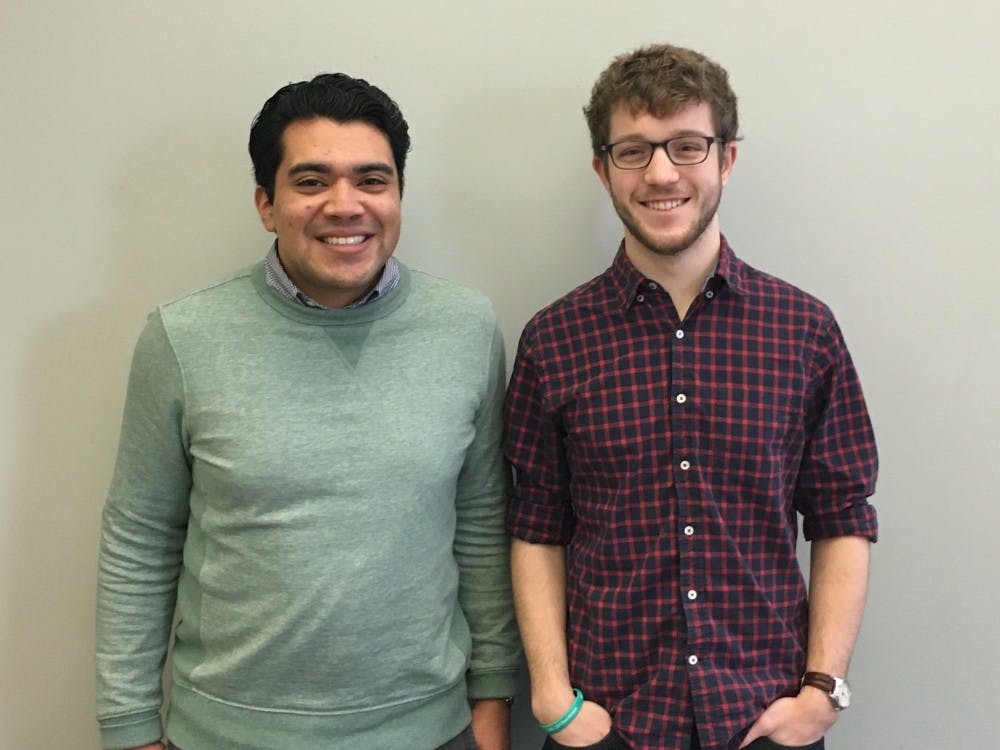(Alissa White -- The Beacon)
By Amanda Blas, Staff Writer -- blas13@up.edu
You may have watched movies with animated toys like "Toy Story," and "Chucky," but the School of Nursing brings a whole new meaning to dolls coming to life.
The School of Nursing's Learning Resource Center is home to two of the most lifelike dolls you will ever come across: high fidelity mannequins.
"They sweat, bleed, open their eyes, drool and have a heart beat and pulse," Mary Oakes, the School of Nursing's simulation program manager, said. "They even pee on command."
These lifelike and technologically advanced mannequins have been used by the School of Nursing since 2004. Each mannequin costs $84,000. Thanks to donors, the School of Nursing was able to obtain the mannequins to encourage stronger learning in their program by providing students with a more realistic experience.
"They're the same ones used by the military, medics and physicians when it comes to training," Oakes said.
Nursing students first meet these mannequins toward the end of junior year and will continue to work with them throughout their senior year. The School of Nursing believes that junior and senior year students are ready to move on to the practice caring for real patients.
"As students learn more concepts and progress in their learning, the functionality of the mannequins must increase," Oakes said.
This increase means providing students with a more realistic experience.
"The high fidelity mannequins show the actual symptoms we're looking for in clinical settings," Duke said. "You can do a more in-depth assessment."
Besides being incredibly realistic, the mannequins also have multiple personalities.
The two mannequins play more than 10 different patients between them, ranging from a 70-year-old man who resemble Sean Connery to younger patients like 3-year-old Kimberley Wright. Created by Oakes, the patients' profiles help add to nursing students' experiences with each patient having a story to share.
"The nursing instructors have spent a lot of time developing each patient's story," junior Madeleine Lougee said. "It always adds humor to the experience."
According to Oakes, the patients' personalities and stories are especially memorable. In fact, some students even talk about the patients they work with as if they are real people.
"Vernia has a really good sense of humor in case you didn't know that," Lougee said, talking about one of the mannequins. "She has great fashion sense, too."
Though the mannequins are made up of nothing but steel, rubber, wires and computers, students sometimes get so lost in their lifelikeness that they forget the mannequins are inanimate.
"It's so funny because they do a good job when they're in there because they're worried they'll hurt them," said September Nelson, director of the School of Nursing's Learning Resource Center. "But they can't. They're mannequins."
Yet, the way the nurses treat their inanimate patients shows they are prepared to work with real ones.
"It warms my heart when we have a (simulated) patient and students will hold their hand or comfort them," Nelson said. "The caring behavior really gets to me."
Many nursing students find the realness of the mannequins to be helpful.
"You can train a lot quicker because you can actually practice your skills," senior Sarah Westbrook said. "They may not be alive, but it still gives you a chance to practice."
However, some students have mixed feelings about their first experiences with the mannequins.
"It was nerve wrecking," junior Daniel Truong said. "I had to take it slow. But it will help me gain experience for the real thing and for the actual work."
Senior Susan Toffler did not like working with the mannequins at all.
"I strongly disliked SIM tests," Toffler said. "They're very stressful."
On the other hand, Lougee sees working with these lifelike mannequins as an enjoyable learning experience.
"The mannequins are a fun, innovative way to simulate patient-nurse interaction," Lougee said.
Despite the varied array of opinions, the School of Nursing believes working with the mannequins is a valuable experience.
"I would say most students wouldn't report it as fun before or during their experiences," Nelson said. "But they do find it helpful afterwards."
"The dress I got for senior prom is my favorite dress and I love it."
Cassie Passon, junior
Vernia Huffman (Alissa White -- The Beacon)
Terry Van Dyke (Alissa White -- The Beacon)







